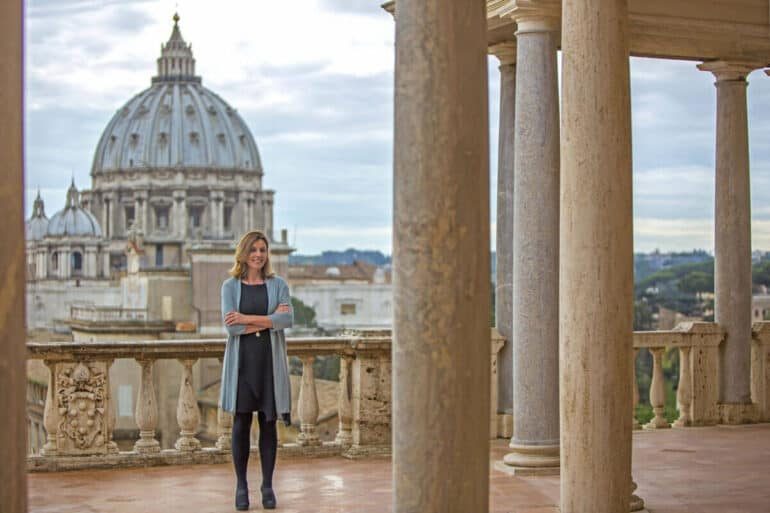Your guide to the Vatican Museums with the Best Things to See
The Vatican Museums, founded in 1506 by Pope Julius II in the Vatican City in Rome, are one of the largest and most famous museums in the world. The museum complex comprises rich archaeological and ethno-anthropological collections and ancient, medieval, renaissance and contemporary art accumulated by the various Popes over the centuries. You will be able to visit the Pinacoteca Vaticana with works from Giotto, Leonardo, Raffaello and Caravaggio, and some of the most exclusive sites within the Palazzi Vaticani, like the Galleria degli Arazzi, the Sistine Chapel, the Stanze di Raffaello and the Borgia apartment. Here is a list of what not to miss at the Vatican Museums.
RECOMMENDED:
How To Visit The Vatican: What To See, Ticket Prices, And More
Top Things To See At St. Peter’s Basilica
Best Hotels near the Vatican
- The Sistine Chapel
- Raphael’s Rooms
- Hall of Constantine
- Room of the Segnatura
- Heliodorus’ Room
- The Room of the Fire in Borgo
- Room VIII
- The Pinacoteca Vaticana
- Gallery of maps
- Pio Clementino Museum
- The Borgia apartment and the pontiff’s secret chambers
- Collection of Modern and Contemporary Art
- Gregorian Egyptian Museum
- Carriage Pavillon
- Ethnological Museum Anima Mundi
- Pigna Courtyard
- Bramante Staircase
- The Vatican Gardens
The Sistine Chapel
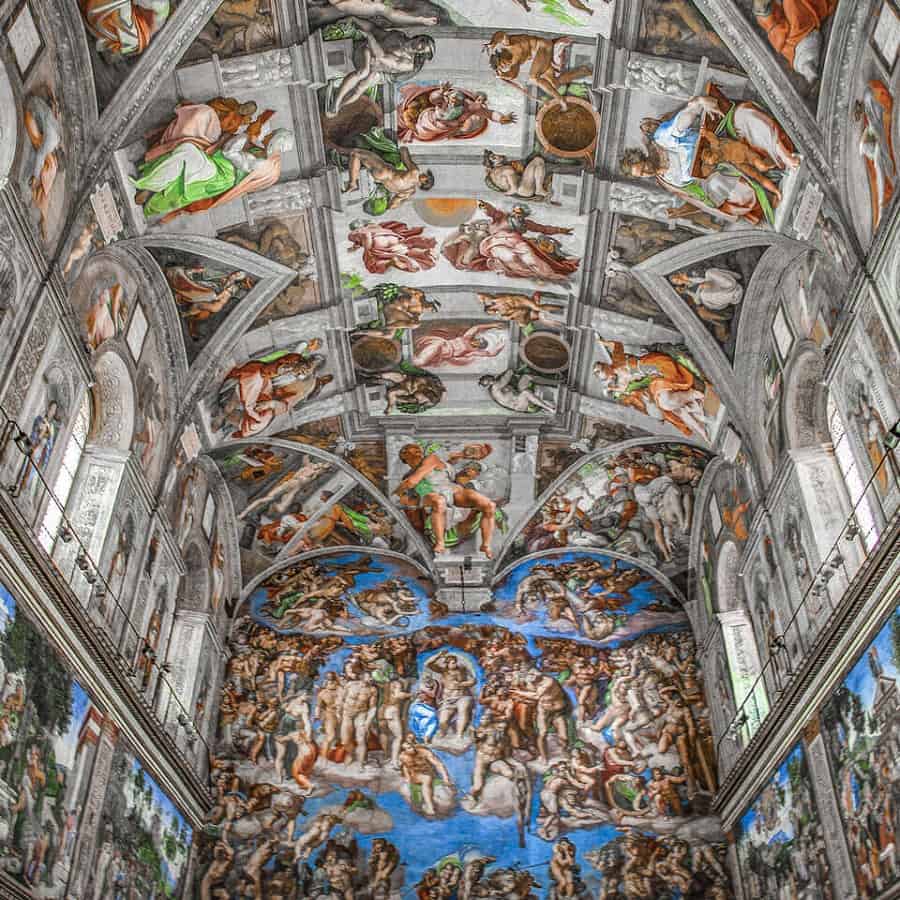
A unique place in the world where every visitor can admire and contemplate frescoes of unparalleled beauty and where the Conclave for the election of the Supreme Pontiff is still held today. The Sistine Chapel takes its name from Pope Sixtus IV della Rovere who between 1481 and 1482, had some of the most renowned painters of the time such as Sandro Botticelli, Pietro Perugino, Domenico Ghirlandaio and Cosimo Rosselli carry out some marble works and frescoes on the walls. Pope Julius II della Rovere, nephew of Sixtus IV, commissioned Michelangelo Buonarroti to paint the vault and, on the upper part of the walls, the lunettes. During the pontificate of Paul III, Michelangelo’s genius reached its highest artistic expression in the painting of the Last Judgement on the great altar wall. With this work, executed between 1536 and 1541, Michelangelo represented the invisible beauty of God in visible form.
The secrets of the Sistine Chapel
Raphael’s Rooms
Universal masterpieces that deserve a visit just to be able to appreciate and admire their beauty and magnificence in person. The Raphael Rooms (le Stanze di Raffaello) were part of the flat chosen by Pope Julius II della Rovere as his residence and located on the second floor of the Papal Palace. The pictorial decoration of the Stanze was carried out by Raphael Sanzio and his pupils. The Raphael Rooms are: Hall of Constantine, Room of the Segnatura, Heliodorus’ room and the Room of the Fire in Borgo.
Hall of Constantine

La Sala di Constantino (the Hall of Constantine), intended for official receptions and ceremonies, is named after Constantine (306-337 AD), the first Roman emperor to officially recognise the Christian religion by granting freedom of worship. The frescoes, commissioned in 1519 by Pope Leo X (pontiff from 1513 to 1521), were completed by his pupil Giulio Romano and other collaborators based on drawings by Raphael. However, after careful examination of style and technique combined, the two allegorical figures of Iustitia and Comitas depicted in the hall were attributed to Raphael himself.
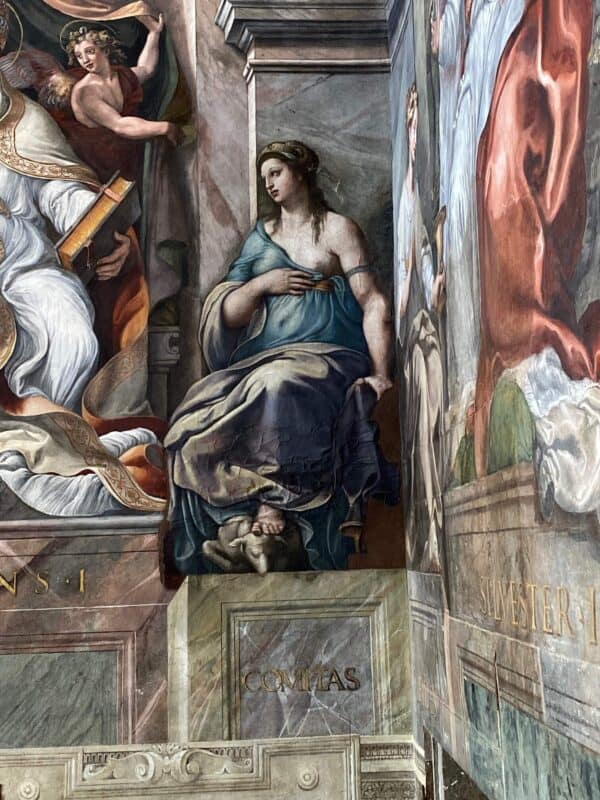
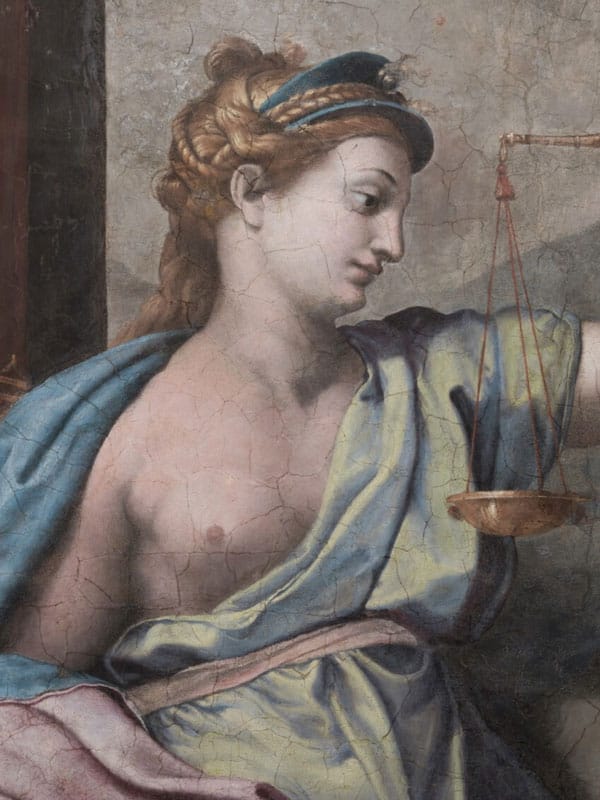
Room of the Segnatura
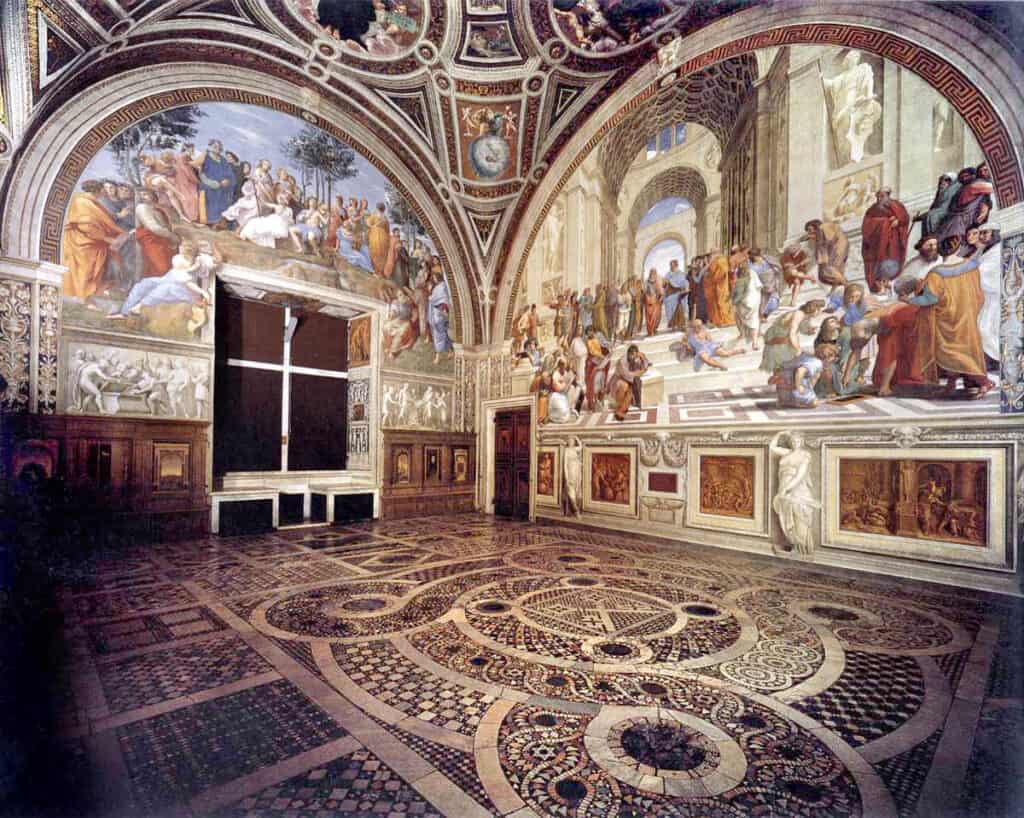
In the Stanza della Segnatura one can admire Raphael Sanzio’s most famous frescoes, which constitute the great artist’s debut in the Vatican and mark the beginning of the Renaissance. The room, used as a library and private study by Julius II (pontiff from 1503 to 1513), takes its name from the ‘Segnatura Gratiae et Iustitiae’, the highest court of the Santa Sede presided over by the pontiff. The frescoes painted by Raphael between 1508 and 1511 aim to represent the three highest categories of the human spirit: the True, the Good and the Beautiful.
Heliodorus’ Room
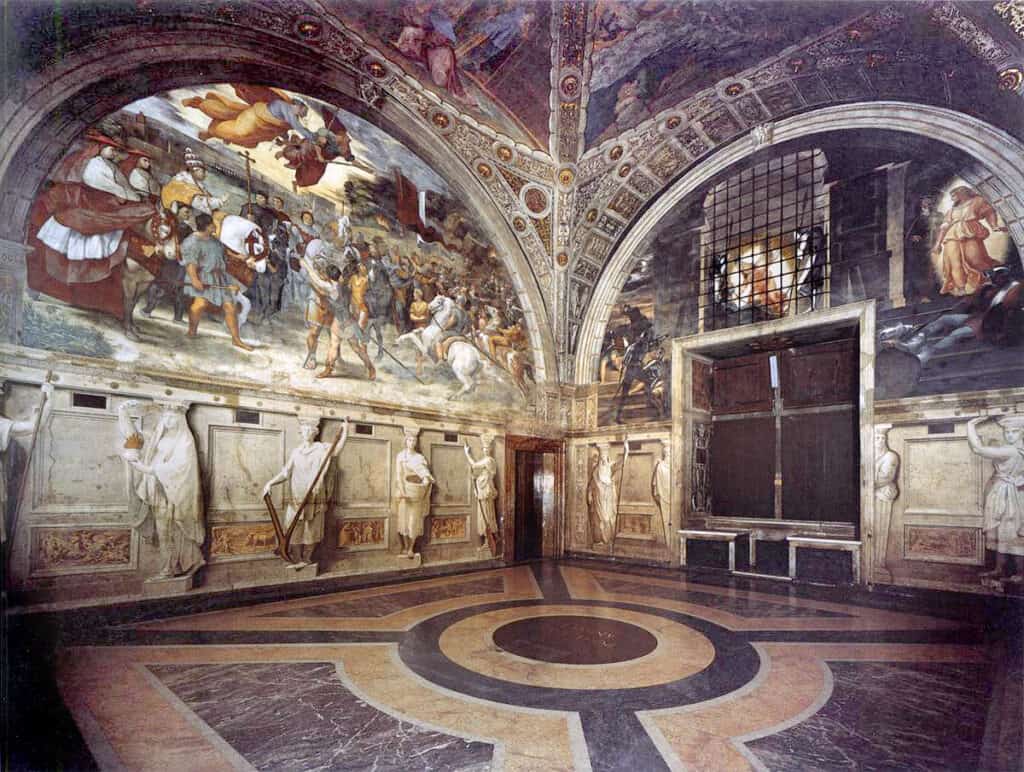
Heliodorus’s room, dedicated to the private audiences of the pontiff, was decorated by Raphael immediately after the Room of the Segnatura. The frescoes document, in different historical moments from the Old Testament to the Middle Ages, the miraculous protection granted by God to the Church. They were also chosen to represent the political programme of Julius II (pontiff from 1503 to 1513), aimed at liberating Italy from French occupation and restoring temporal power to the papacy. On the vault we find the four episodes from the Old Testament painted by Raphael, while in the grottoes and arches we find works by Luca Signorelli, Bramantino, Lorenzo Lotto and Cesare da Sesto.
The Room of the Fire in Borgo
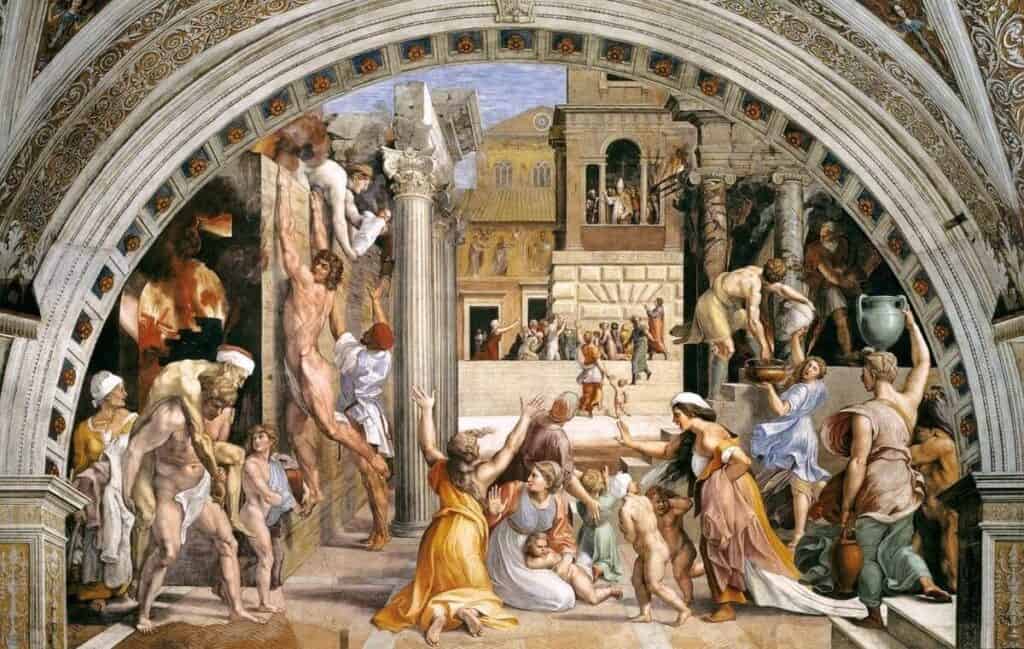
The Stanza dell’Incendio di Borgo is part of the Raphael Rooms and is the third to have been decorated by Raphael together with his pupils, between 1514 and July 1517. During the pontificate of Julius II, the room was dedicated to meetings of the highest court of the Santa Sede. During the pontificate of Leo X, the room was used as a dining room and Raphael Sanzio was commissioned to paint the walls. The frescoes illustrate the political aspirations of Leo X by means of stories from the lives of two of the previous popes by the same name: Leo III and Leo IV.
INSPIRATION
Top things to see at St.Peter’s Basilica
Room VIII
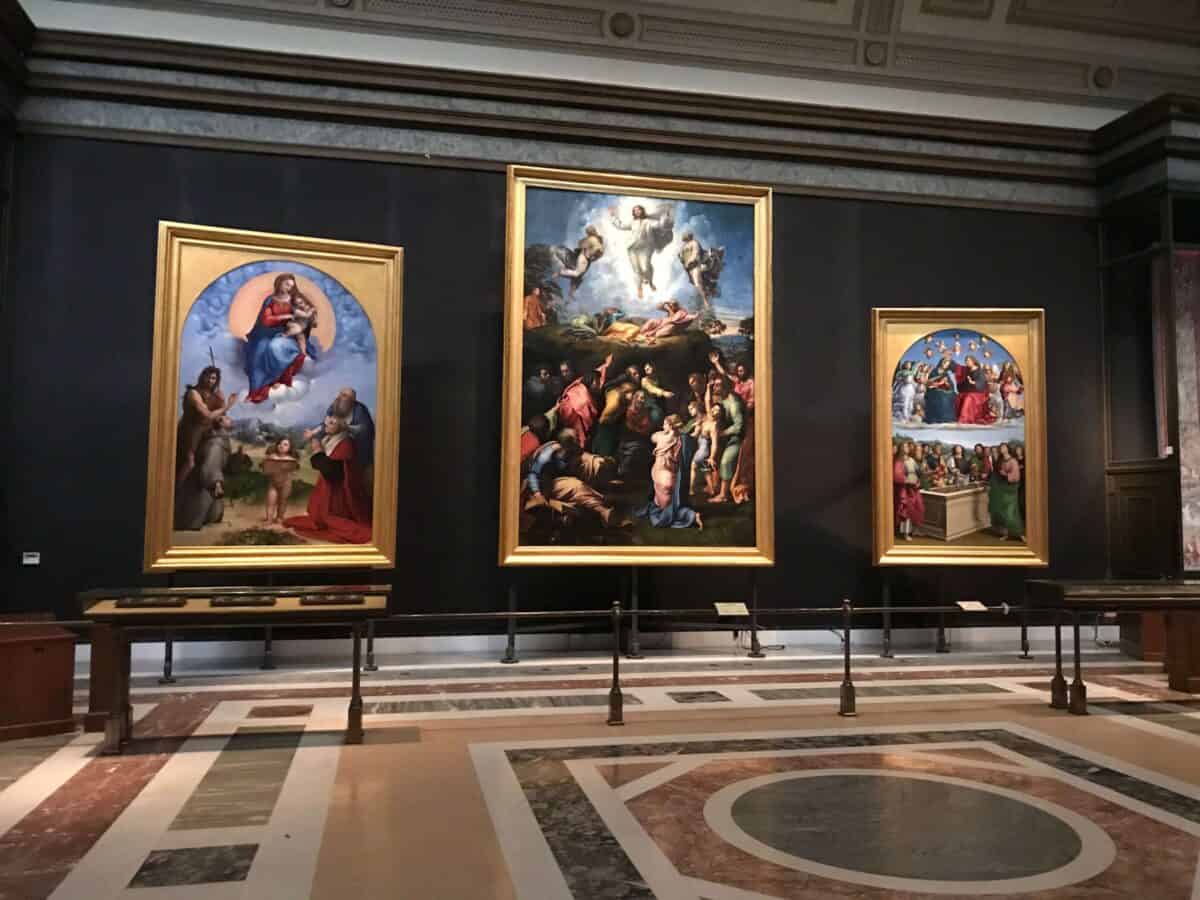
Foto: © Governatorato SCV – Direzione dei Musei
Room VIII, one of the most significant rooms of the Pinanoteca Vaticana dedicated to Raphael Sanzio (1483 -1520), houses three of the great artist’s altarpieces and tapestries highlighted by an accurate and modern lighting project completed in 2020. A warm and soft but at the same time precise and direct light enhances the beauty, colours and materials of each of the works on display and creates an intimate and welcoming environment where each visitor is invited to pause in silence and meditation.
INSPIRATION
Where To Eat Near The Vatican
The Pinacoteca Vaticana
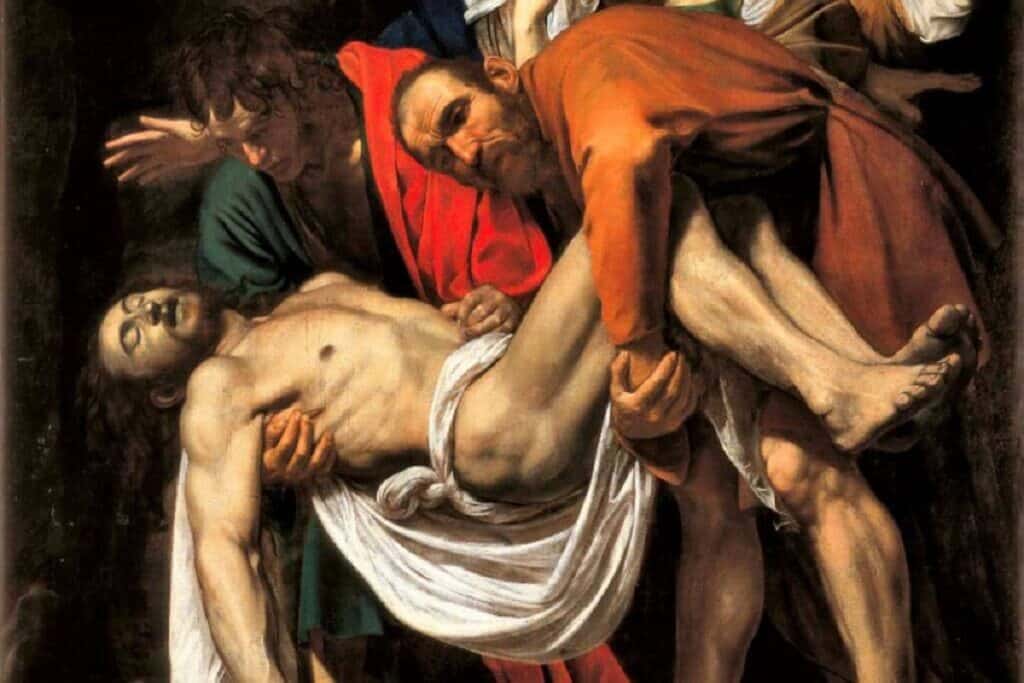
Some masterpieces by the greatest artists in the history of Italian painting are kept in the Pinanoteca Vaticana, which was opened on 27 October 1932. The Pinanoteca is housed in the building constructed by architect Luca Beltrami in a part of the 19th-century Giardino Quadrato. Thanks to donations and acquisitions over the years, the Pinanoteca currently houses a collection of about 460 works, arranged in eighteen rooms. The collection includes masterpieces from some of the best artists of all times, from Giotto to Beato Angelico, to Melozzo da Forlì to Perugino, Raphael, Leonardo, Tiziano, Veronese, Caravaggio and Crespi.
INSPIRATION
What to wear to the Vatican
Gallery of maps
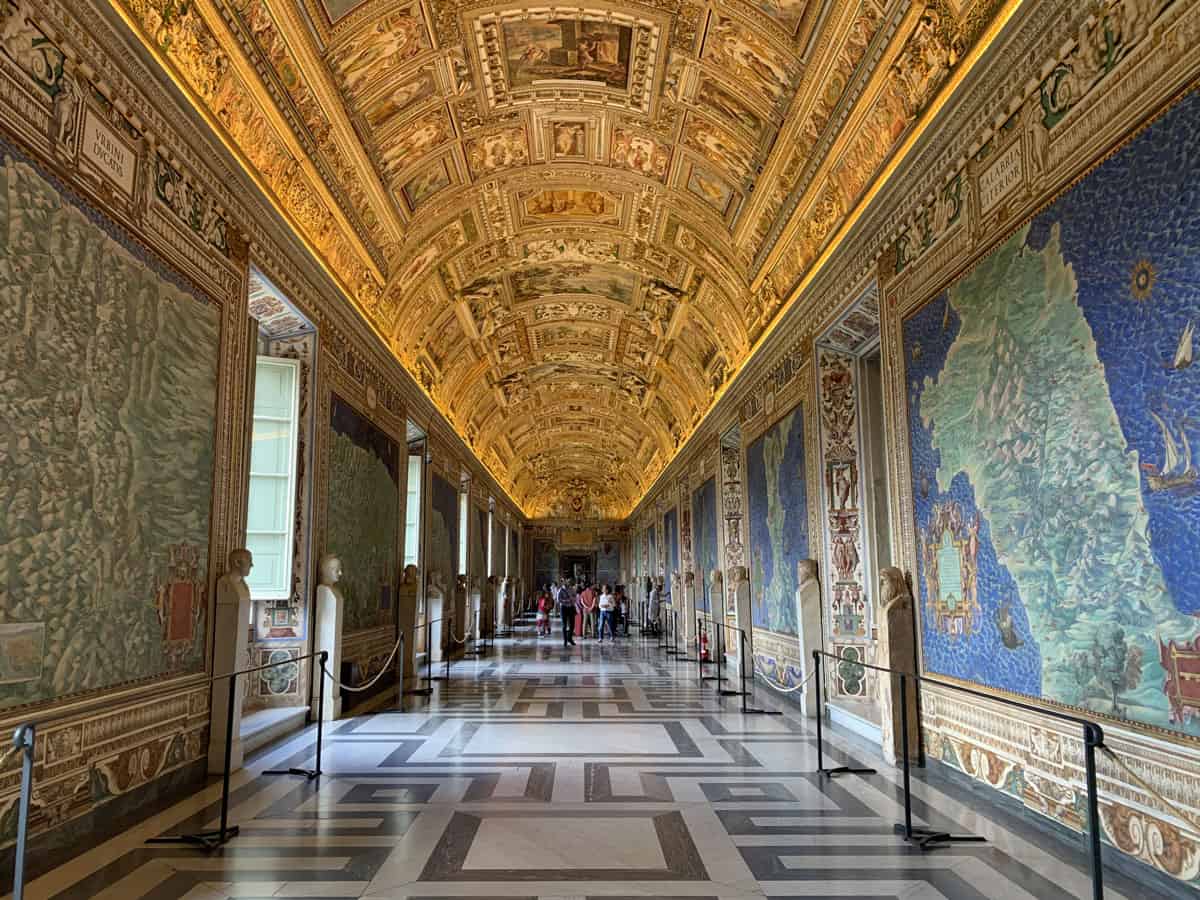
One of the most evocative and original sights to be found along the tour of the Vatican Museums is Gallery of Maps. The Gallery was built between 1580 and 1585 and decorated with beautiful frescoes depicting the maps of the regions of Italy by Italian and Flemish artists under the direction of the mathematician, astronomer and cosmographer Ignazio Danti. On the ceiling adjacent to each region are representations of the main religious events that took place in it and at the end of the gallery are frescoes of the main Italian ports of the 16th century: Civitavecchia, Genoa, Ancona and Venice.
Pio Clementino Museum
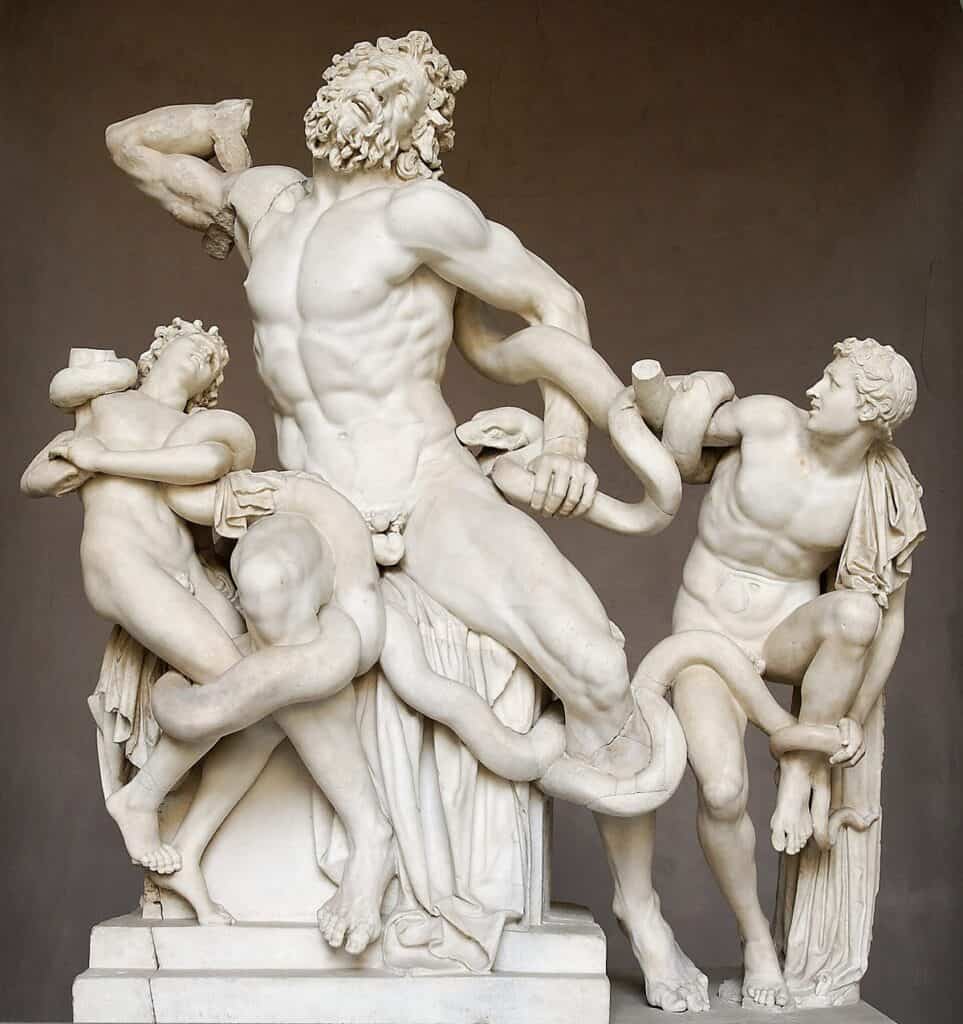
To admire some of the most important masterpieces from Greek and Roman times, the Pio Clementino Museum is worth a visit. The museum has one of the most important collections of classical sculpture in the world. Here we find some of the most famous ancient works including the Apollo of Belvedere, the famous Laocoonte group and Perseo con la testa di Medusa tra due Pugilatori by the great Antonio Canova.
The Borgia apartment and the pontiff’s secret chambers
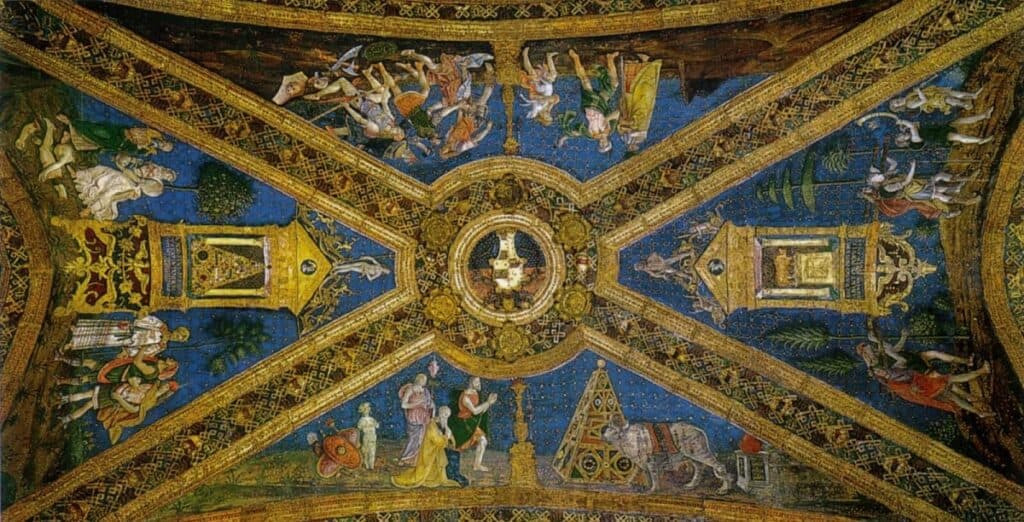
Among the rooms to visit in the Vatican Palaces it is essential to include the sumptuous decorative complex of the Borgia Apartment, residence of Pope Alexander VI, painted between 1492 and 1494 by the Umbrian painter Pinturicchio or Pintoricchio. The Borgia Apartment, which occupied the entire first level of the Apostolic Palace, comprising six rooms of monumental importance, currently houses part of the Contemporary Art Collection of the Vatican Museums: theSale delle Sibille and del Credo in the Borgia Tower; those of the Liberal Arts, of the Saints and of the Mysteries referred to as “secret chambers” in the Diary of Johannes Burckhard (Pope Alexander’s master of ceremonies); and finally, the Hall of the Pontiffs.
Collection of Modern and Contemporary Art
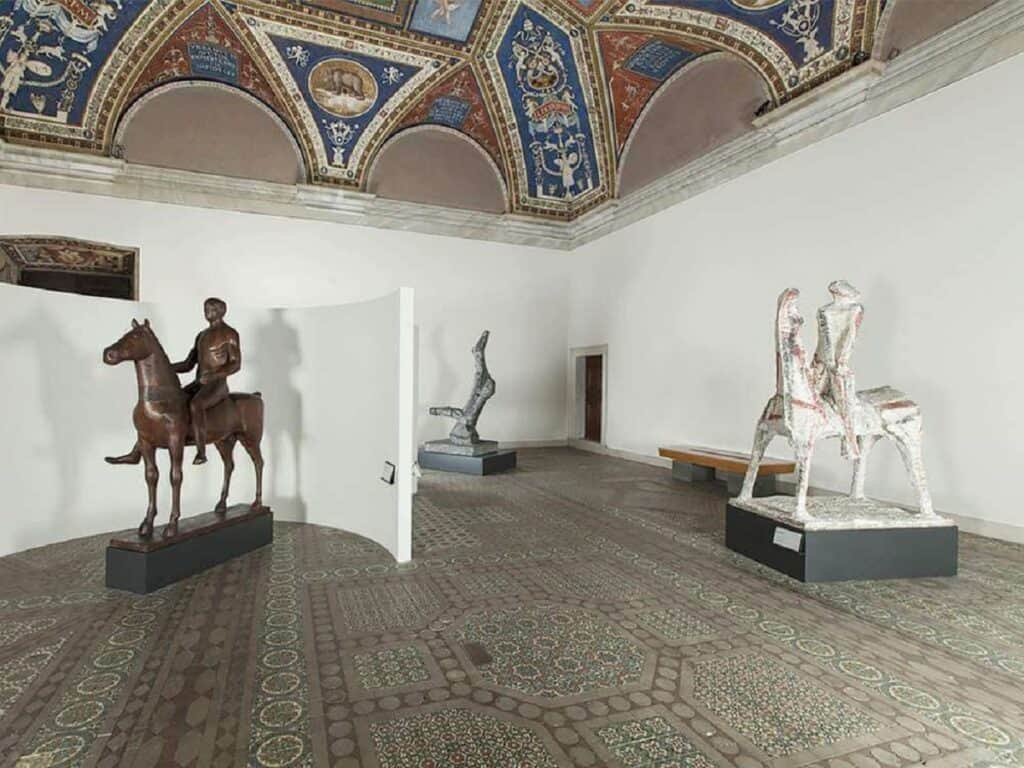
Along an itinerary that winds its way from the Borgia Apartment to the Sistine Chapel, visitors can admire a section dedicated to the Collection of Modern and Contemporary Art, which brings together works of painting, sculpture and graphics donated to the Vatican over the years by artists, collectors, private and public institutions. Approximately 8,000 works of 19th and 20th century Italian and international art signed by some of the most important artists of the time, including van Gogh, Bacon, Chagall, Carrà, de Chirico, Manzù, Capogrossi, Fontana, Burri and Matisse.
Gregorian Egyptian Museum
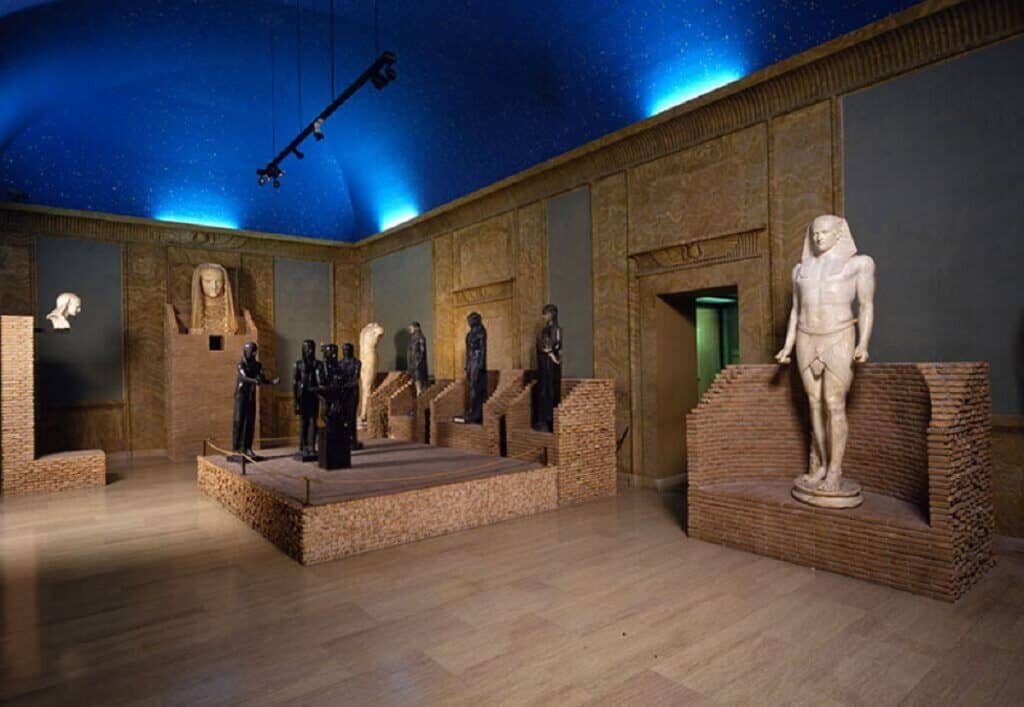
Papyri, mummies and hieroglyphic inscriptions are just some of the ancient Egyptian artefacts on display in the Vatican Museum’s Gregorian Egyptian Museum. The museum, founded in 1839 by Pope Gregory XVI, houses a vast collection of remains from Roman Egypt with numerous Egyptian works of Roman manufacture and is divided into nine rooms.
Carriage Pavillon
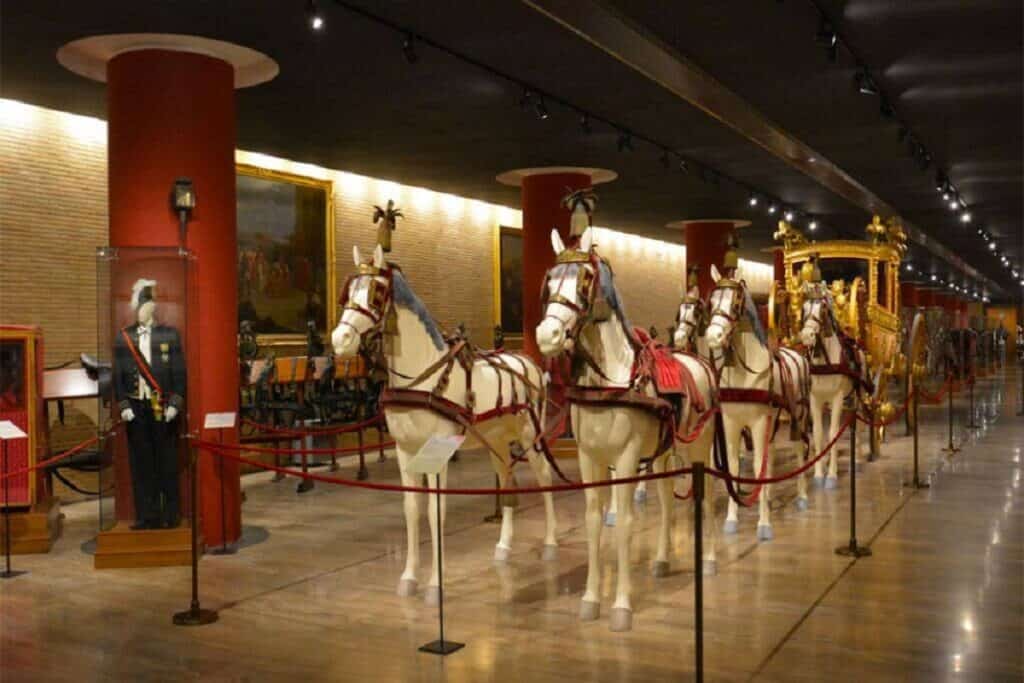
The jewel in the crown of the Collection of Period Carriages is the magnificent Grand Gala Sedan, built in Rome in 1826 by Leo XII, to which are added the nine ceremonial sedans of Popes or Princes of the Holy Roman Church, such as that of Cardinal Lucien Louis Bonaparte, who received it as a gift from his cousin Napoleon. Also on display in the Carriage Pavilion are two historic travel sedans and a collection of several cars donated to the most recent popes by leading international car manufacturers.
Ethnological Museum Anima Mundi
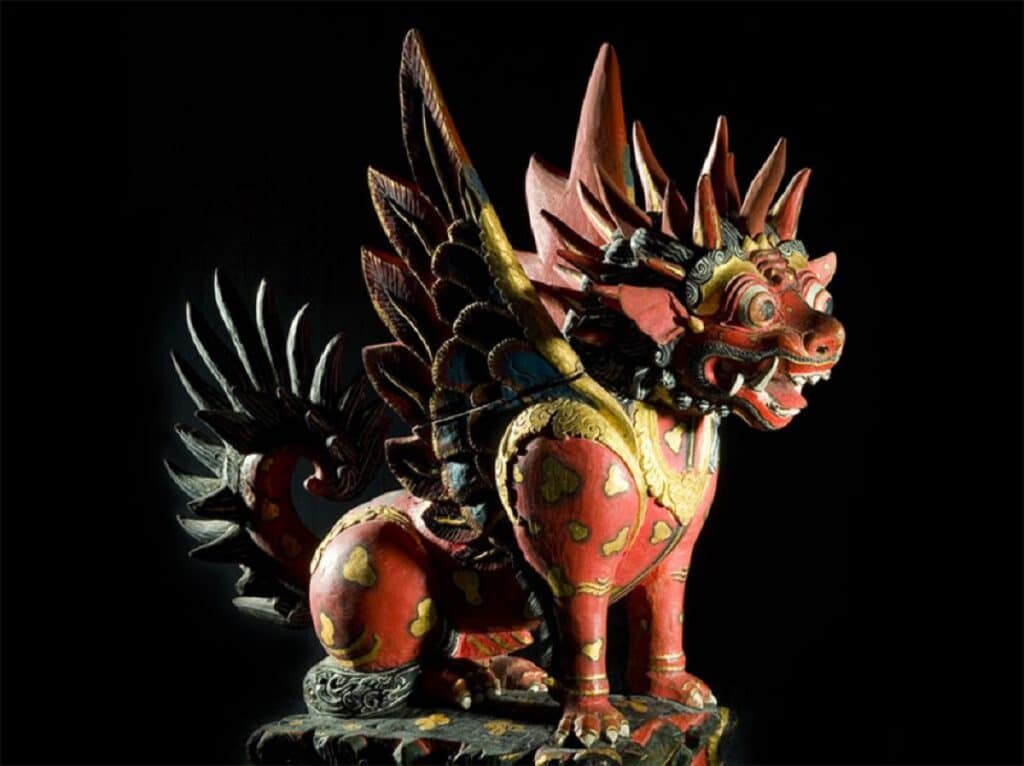
Thousands of prehistoric artefacts from all over the world and dating back more than two million years, as well as donations to the present-day Pope, are on display in the Ethnological Museum Anima Mundi. The museum houses about 80,000 objects and works of art: from vestiges of the great Asian spiritual traditions to those of the pre-Columbian civilisations and Islam; from the productions of the African populations to those of the inhabitants of Oceania and Australia, as well as the indigenous inhabitants of the Americas.
Pigna Courtyard
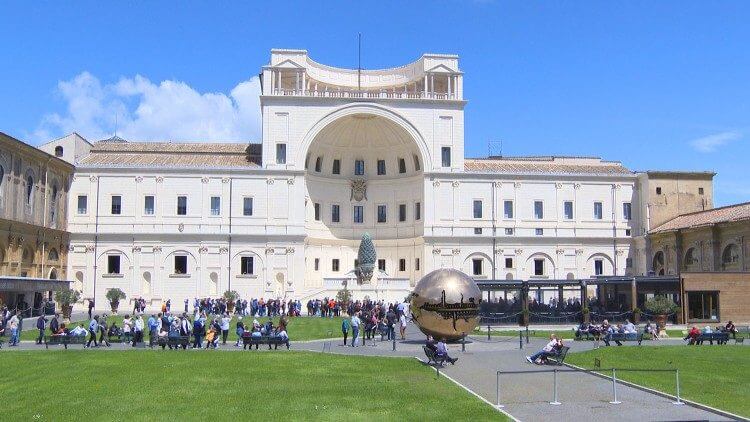
Il Cortile della Pigna, the Courtyard of the Pine Cone is a large outdoor space of 300 square metres adjacent to the museum corridors and rooms where various works of art, both ancient and modern, are located. The courtyard takes its name from the enormous bronze pinecone four metres high and two and a half metres wide, which is placed at the top of a double flight of steps designed by Michelangelo and has a connotation of immortality and rebirth. Another important sculpture on display in the courtyard is Arnaldo Pomodoro’s ‘Sfera con sfera’, a circular bronze work that slowly rotates in the wind thanks to an internal mechanism.
Bramante Staircase
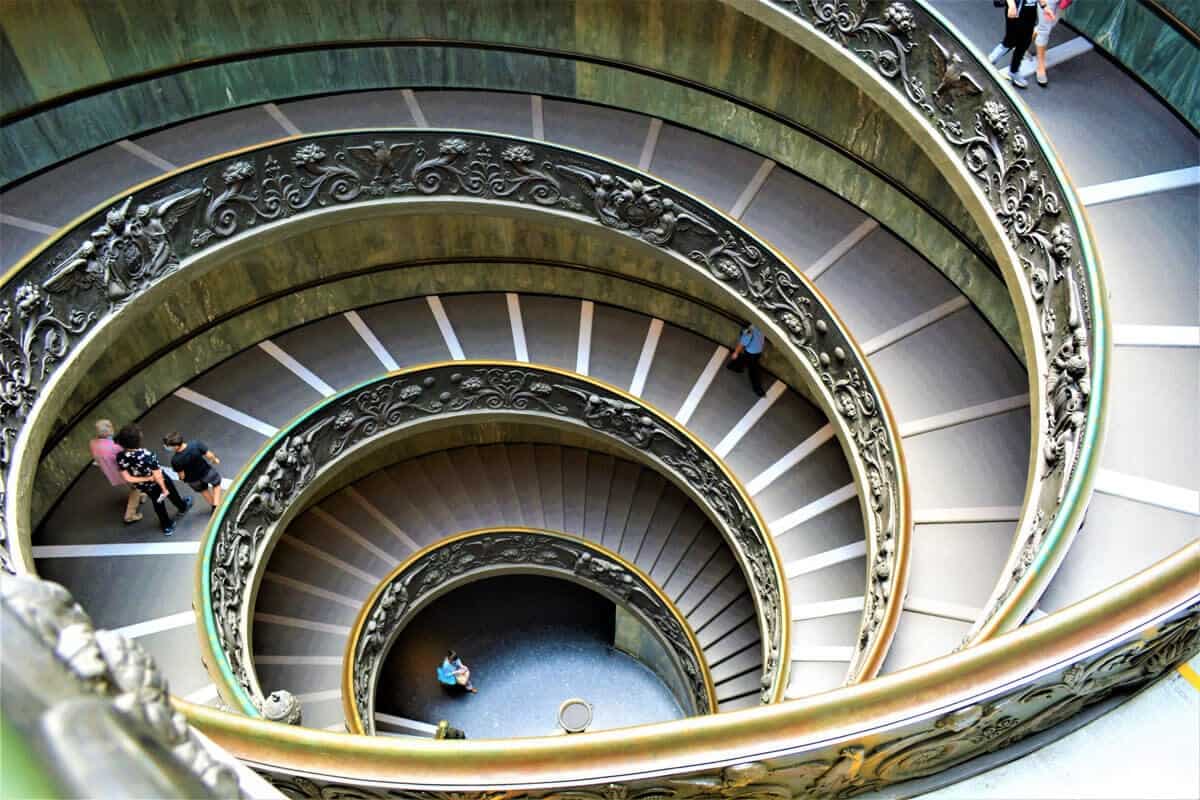
The tour of the Vatican Museums concludes by passing through the striking and original monumental double spiral helical staircase designed by the Italian architect and engineer Giuseppe Momo.
The Vatican Gardens
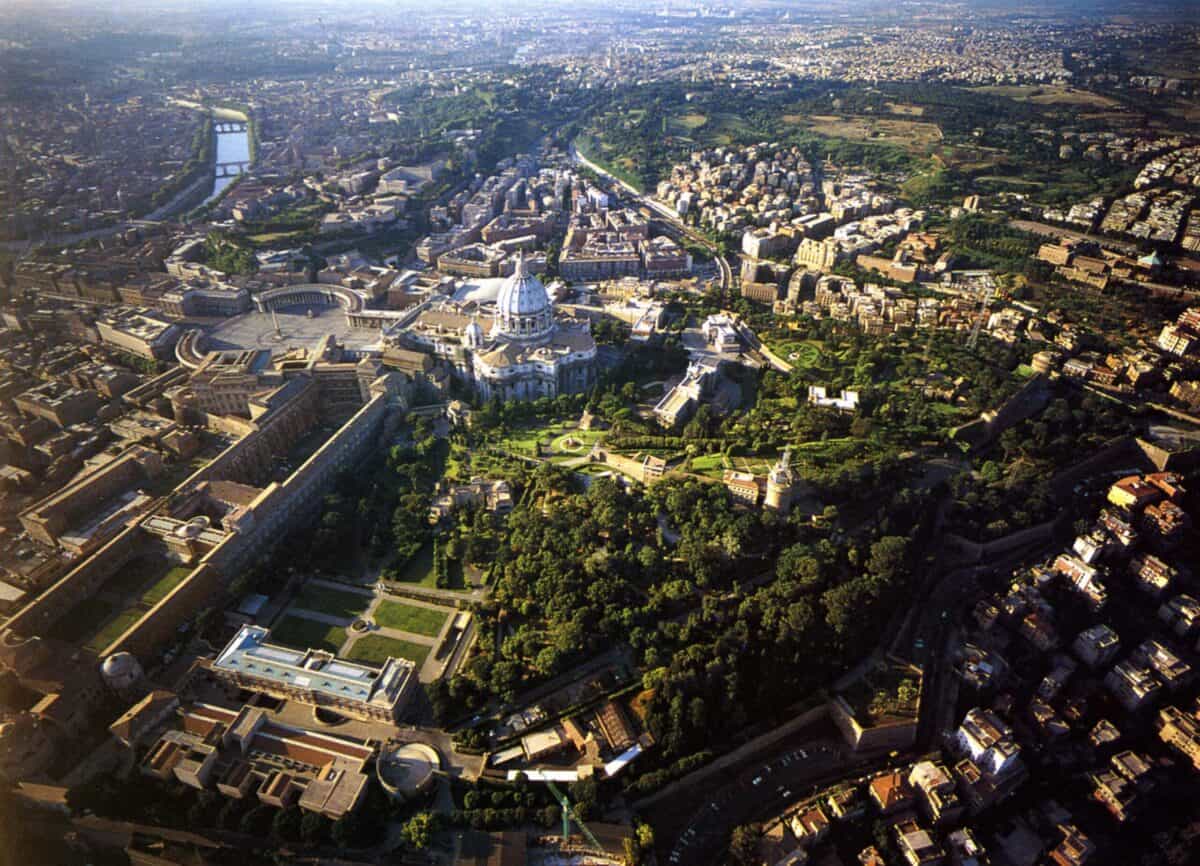
Along with the Vatican Museums, you can also visit the Vatican Gardens. A green oasis of peace and tranquillity within the Vatican City. Currently, the Vatican Gardens extend from the south to the north-west of the City and occupy an area of approximately 23 hectares. Inside they are divided by zones, and contain buildings, fountains, statues and temples, some of which were designed by famous artists and architects such as Donato Bramante and Pirro Ligorio.
Address
Viale Vaticano snc
Vatican Museums Opening Times
Monday-Saturday 9am-6pm (last admission 4pm)
Vatican Museums free on last Sunday each month
Every last Sunday of the month 9am-2pm (last admission 12.30pm)
The Vatican Museums are closed on 1 and 6 January, 11 February, 10 April, 1 May, 29 June, 15 and 16 August, 1 November and 8, 25, 26, 31 December.


